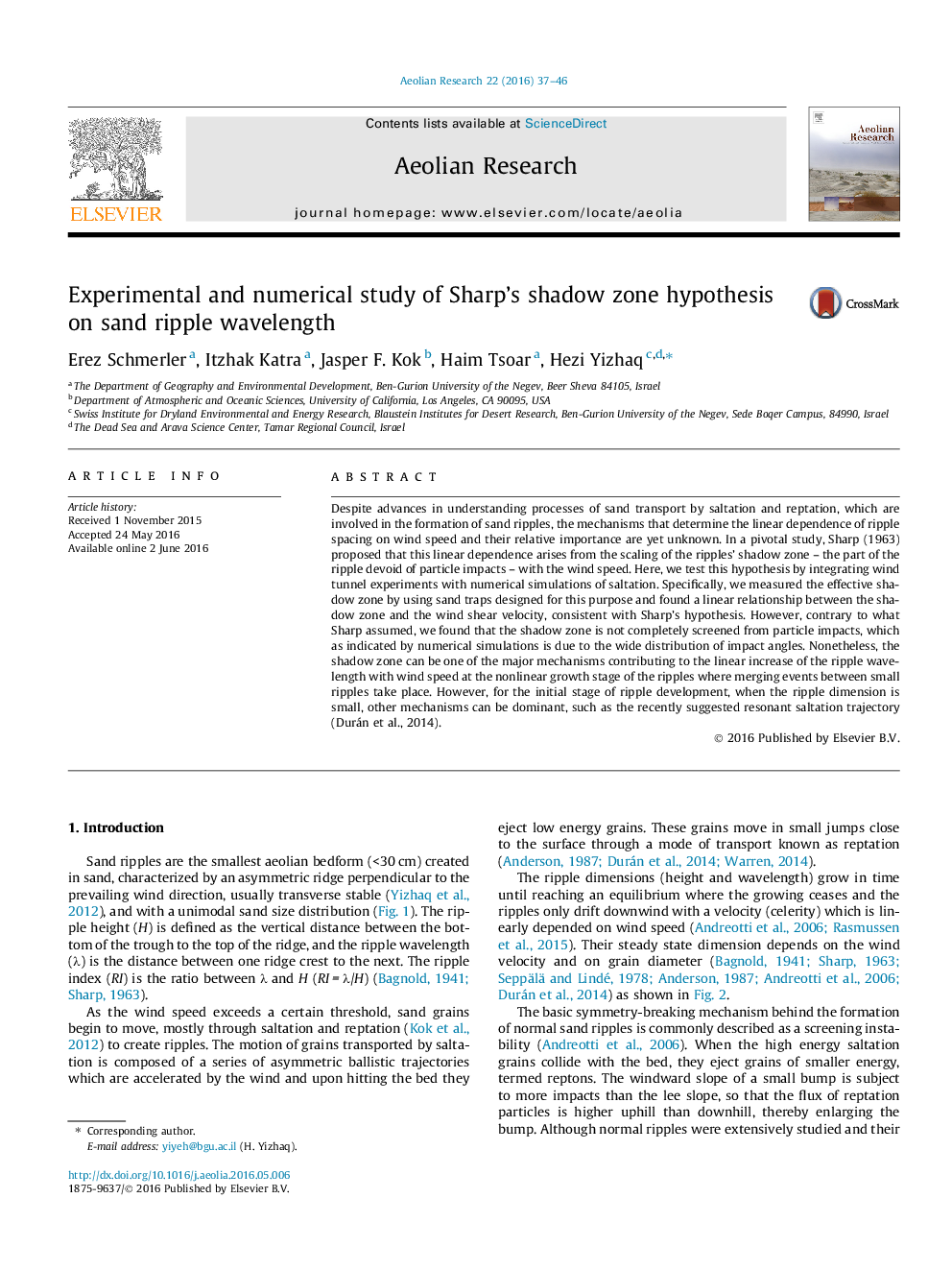| Article ID | Journal | Published Year | Pages | File Type |
|---|---|---|---|---|
| 6426225 | Aeolian Research | 2016 | 10 Pages |
â¢Sharp's shadow zone hypothesis for ripples was tested by wind tunnel experiments.â¢The effective shadow zone increases linearly with shear velocity.â¢The shadow zone is not completely screened from the impact of saltators.â¢Numerical simulations show a wide distribution of impact angles.â¢The impact angle decrease with shear velocity and grain diameter.
Despite advances in understanding processes of sand transport by saltation and reptation, which are involved in the formation of sand ripples, the mechanisms that determine the linear dependence of ripple spacing on wind speed and their relative importance are yet unknown. In a pivotal study, Sharp (1963) proposed that this linear dependence arises from the scaling of the ripples' shadow zone - the part of the ripple devoid of particle impacts - with the wind speed. Here, we test this hypothesis by integrating wind tunnel experiments with numerical simulations of saltation. Specifically, we measured the effective shadow zone by using sand traps designed for this purpose and found a linear relationship between the shadow zone and the wind shear velocity, consistent with Sharp's hypothesis. However, contrary to what Sharp assumed, we found that the shadow zone is not completely screened from particle impacts, which as indicated by numerical simulations is due to the wide distribution of impact angles. Nonetheless, the shadow zone can be one of the major mechanisms contributing to the linear increase of the ripple wavelength with wind speed at the nonlinear growth stage of the ripples where merging events between small ripples take place. However, for the initial stage of ripple development, when the ripple dimension is small, other mechanisms can be dominant, such as the recently suggested resonant saltation trajectory (Durán et al., 2014).
